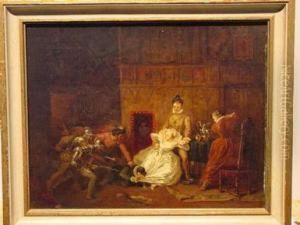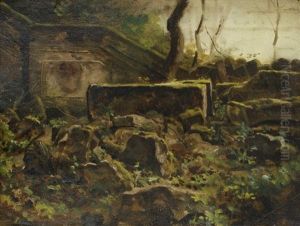Hugo Von Blomberg Paintings
Hugo von Blomberg was a German artist, born in 1888, whose career spanned several pivotal moments in European art history, including both World Wars. His work is less widely known than that of his contemporaries, but it provides a unique perspective on the evolution of modern art in Germany during the 20th century. Von Blomberg's artistic journey reflects a blend of traditional and experimental approaches, making his oeuvre a fascinating study in the context of the era's artistic movements.
Von Blomberg showed an early talent for drawing and painting, and he pursued his passion for art through formal education in Germany's prestigious art schools. His early work was influenced by Impressionism and Expressionism, movements that were dominant in German art circles at the time. However, as his career progressed, von Blomberg began to experiment with abstract forms and compositions, reflecting the broader shifts in European art towards abstraction and non-representational imagery.
Throughout his career, Hugo von Blomberg navigated the challenging political and social landscape of Germany. The rise of the Nazi regime and the outbreak of World War II had a profound impact on the art world, with many artists facing censorship or being deemed 'degenerate' by the regime. Von Blomberg's work during this period became more introspective and nuanced, possibly as a response to the oppressive environment. Despite these challenges, he continued to produce work that was both personal and reflective of the tumultuous times.
After World War II, von Blomberg's style evolved further, incorporating elements of the emerging Abstract Expressionism movement. His later works are characterized by a dynamic use of color and form, demonstrating his continued willingness to explore new artistic directions. Hugo von Blomberg remained active in the art world until his death in 1975, leaving behind a legacy that, while not as recognized as that of some of his peers, offers a unique window into the complexities of 20th-century art.
Von Blomberg's contributions to art are marked by his resilience and adaptability in the face of changing artistic and political landscapes. His body of work encompasses a range of styles and themes, from early figurative works to later abstract compositions. Though his name may not be immediately familiar to many, Hugo von Blomberg's art continues to be studied by those interested in the nuanced developments of German art throughout a century marked by extreme upheaval and innovation.

